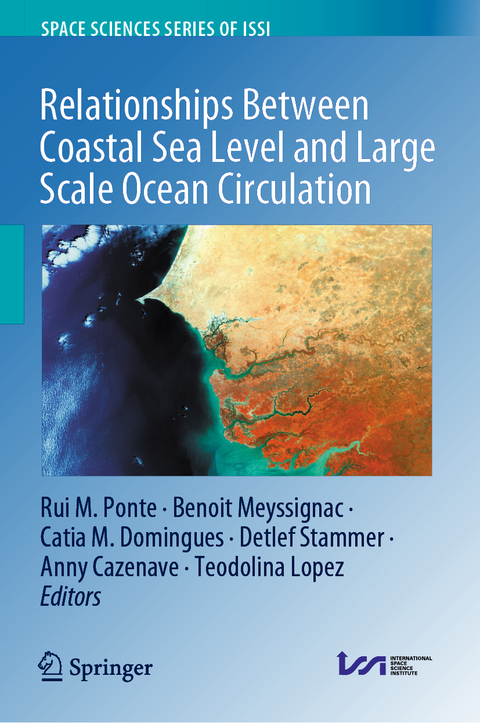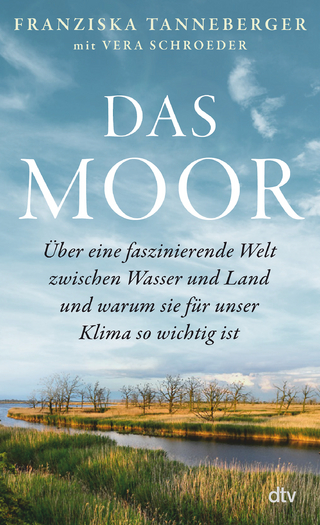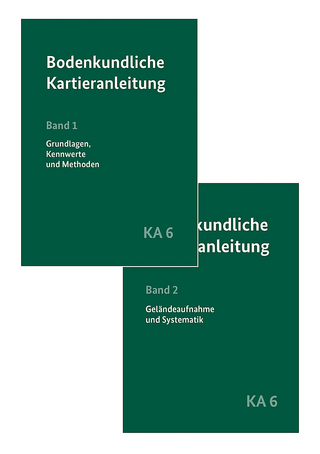
Relationships Between Coastal Sea Level and Large Scale Ocean Circulation
Springer International Publishing (Verlag)
978-3-030-45633-7 (ISBN)
Previously published in Surveys in Geophysics, Volume 40, Issue 6, 2019
The chapters "Concepts and Terminology for Sea Level: Mean, Variability and Change, Both Local and Global", "Forcing Factors Affecting Sea Level Changes at the Coast", "Sea Level and the Role of Coastal Trapped Waves in Mediating the Influence of the Open Ocean on the Coast", "Impacts of Basin-Scale Climate Modes on Coastal Sea Level: a Review", "Interactions Between Mean Sea Level, Tide, Surge, Waves and Flooding: Mechanisms and Contributions to Sea Level Variations at the Coast", "Uncertainties in Long-Term Twenty-First Century Process-Based Coastal Sea-Level Projections" and "Probabilistic Sea Level Projections at the Coast by 2100" are available as open access articles under a CC BY 4.0 license at link.springer.com
Rui M. Ponte is a Principal Scientist at Atmospheric and Environmental Research, Inc., where he leads the Atmosphere, Ocean & Climate Section. Aside from working extensively on problems related to the modeling and interpretation of sea level variability and change, his broad and multidisciplinary research interests have led him to study the general circulation of the ocean and atmosphere using the angular momentum approach, the intraseasonal variability in the tropical atmosphere and oceans, the effects of the ocean on the Earth's rotation and gravity field, and the oceanic meridional overturning circulation, among other topics. Benoît Meyssignac is a research scientist at the "Laboratoire d'Etudes en Géophysique et Océanographie Spatiale" (LEGOS) and at the "Centre National d'Etudes Spatiales" (CNES) in Toulouse, France. His research aims at understanding the variations of the global Earth energy-water cycle (including sea level and mass transfer variations) at regional and global scales through satellite observations and modelling approaches. His efforts have ranged from the development of global sea level products and global mass redistribution products (with associated uncertainties) tailored for robust comparisons with climate models to the detection and attribution of anthropogenic forcing (greenhouse gases and aerosols emissions) and natural forcing (solar variability, volcanic eruptions) in the Earth energy-water cycle variations. His research on high precision geodetic measurements of the Earth energy-water reservoirs leads to new insights on the behaviour of the energy-water cycle and guide the improvement of climate models. Catia M. Domingues is a senior physical oceanographer in the Marine Physics and Ocean Climate group at the National Oceanography Centre in Southampton, UK, and an associated affiliated at the University of Tasmania, Hobart, Australia. Her research, in collaboration with graduate students and collaborators, aims at understanding variability and change in ocean heat uptake and transport, including implications for watermasses, ocean circulation, climate and sea level; physical mechanisms involved; and the role of natural and anthropogenic forcings. Her most significant contributions unravelled the faster rate of upper-ocean warming at multidecadal timescales, allowing the closure of the global mean sea level budget and consistency with Earth's energy budget, and increased confidence in the attribution to human-induced causes. Anny Cazenave is director for Earth sciences at the International Space Science Institute, Bern, Switzerland and emeritus scientist at the 'Laboratoire d'Etudes en Géophysique et Océanographie Spatiale', Toulouse, France. Her research deals with the applications of space techniques to geosciences (geodesy, solid Earth geophysics, sea level change and climatic causes, land hydrology from space). Teodolina Lopez is a research engineer at IRT Saint-Exupéry - Fondation STAE. She received the Ph.D. degree in planetary science from the University Toulouse III in 2011. After different post-doctoral positions in France, she held an Earth Science post-doctoral position, from 2016 to 2019, at the International Space Science Institute (ISSI) in Bern, Switzerland. Her research focuses on the characterisation in (semi-) arid regions of the groundwater flow and transfers and their interaction with the atmosphere. This approach relies on the synergy between Earth Observation dataset (mostly thermal infrared and gravity) with in situ measurements (geophysical, geochemical and geology) and simulations. Detlef Stammer is Head of Remote Sensing and Assimilation and Director of the Center for Earth System Research and Sustainability at the University of Hamburg, Germany. Stammer's research interests include the role of the ocean in climate variability and
Guest Editorial: Relationships Between Coastal Sea Level and Large-Scale Ocean Circulation.- Concepts and Terminology for Sea Level: Mean, Variability and Change, Both Local and Global.- Correction to: Concepts and Terminology for Sea Level: Mean, Variability and Change, Both Local and Global.- Coastal Sea Level and Related Fields from Existing Observing Systems.- Satellite Altimetry Measurements of Sea Level in the Coastal Zone.- Forcing Factors Affecting Sea Level Changes at the Coast.- The Ability of Barotropic Models to Simulate Historical Mean Sea Level Changes from Coastal Tide Gauge Data.- Impact of Continental Freshwater Runoff on Coastal Sea Level.- Sea Level and the Role of Coastal Trapped Waves in Mediating the Influence of the Open Ocean on the Coast.- Impacts of Basin-Scale Climate Modes on Coastal Sea Level: a Review.- Trends of Coastal Sea Level Between 1993 and 2015: Imprints of Atmospheric Forcing and Oceanic Chaos.- The Contribution of Wind-Generated Waves to CoastalSea-Level Changes.- Interactions Between Mean Sea Level, Tide, Surge, Waves and Flooding: Mechanisms and Contributions to Sea Level Variations at the Coast.- Climate Model Uncertainty and Trend Detection in Regional Sea Level Projections: A Review.- Uncertainties in Long-Term Twenty-First Century Process-Based Coastal Sea-Level Projections.- Probabilistic Sea Level Projections at the Coast by 2100.
| Erscheinungsdatum | 05.06.2020 |
|---|---|
| Reihe/Serie | Space Sciences Series of ISSI |
| Zusatzinfo | VI, 450 p. 1 illus. |
| Verlagsort | Cham |
| Sprache | englisch |
| Maße | 155 x 235 mm |
| Gewicht | 840 g |
| Themenwelt | Naturwissenschaften ► Geowissenschaften ► Geografie / Kartografie |
| Naturwissenschaften ► Geowissenschaften ► Hydrologie / Ozeanografie | |
| Schlagworte | climate change • climate models • Coastal ocean • Coastal processes • Coastal Sciences • ISSI workshop • land-sea interactions • sea level |
| ISBN-10 | 3-030-45633-1 / 3030456331 |
| ISBN-13 | 978-3-030-45633-7 / 9783030456337 |
| Zustand | Neuware |
| Informationen gemäß Produktsicherheitsverordnung (GPSR) | |
| Haben Sie eine Frage zum Produkt? |
aus dem Bereich


